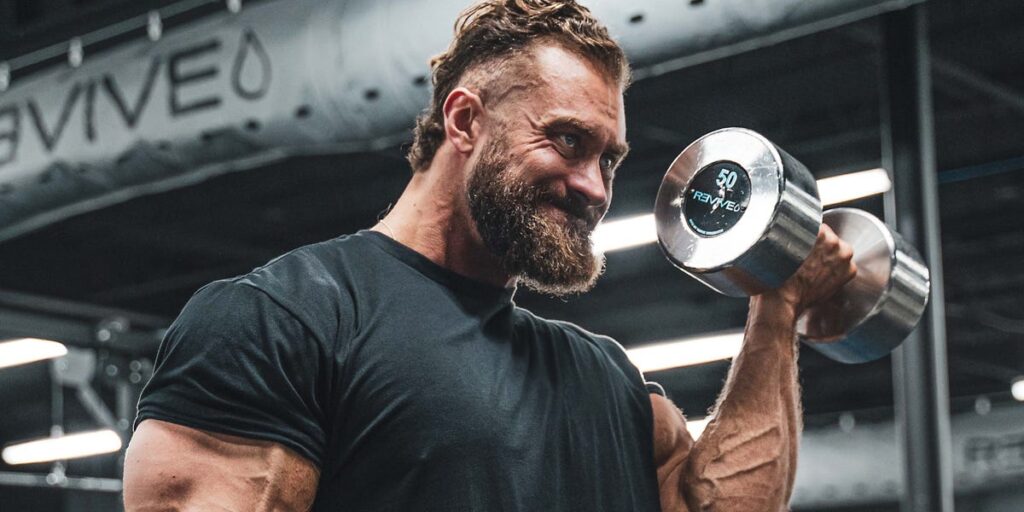If you want to get shredded, take it from one of the top bodybuilders since Arnold Schwarzenegger: heavy weights and plenty of protein are the simple rules for success.
Chris Bumstead has dominated the Classic Physique category at the legendary Mr. Olympia competition since 2019, clinching the first place spot every year until his retirement in 2024 — the most wins in the category’s history.
Unlike some pro bodybuilding divisions which reward extreme amounts of muscle mass, Classic Physique prioritizes proportions and symmetry. Winners in the category exemplify a more graceful, balanced athleticism compared to stereotypical images of bodybuilders as massive and musclebound.
For Bumstead, finding that balance includes looking ahead to long-term health, including mobility, to stay functional as well as jacked.
“Building and maintaining muscle isn’t just about aesthetics, it plays a huge role in longevity, overall health, and keeping your metabolism strong,” Bumstead told Business Insider in an interview about his supplement brand, RAW nutrition.
Courtesy of Chris Bumstead
Whether you want to step onstage or just get in better shape for a longer, healthier life, the game plan is the same.
“As we age, maintaining muscle becomes even more critical, and that comes down to two simple things: eating enough protein and lifting weights regularly,” he said.
Build more muscle by lifting heavy
Lifting weights is an essential part of building muscle, and a key factor is choosing the right amount of weight, and reps, for your goals.
Bumstead said he uses a simple strategy to pack on muscle, separating his training in phases over the year with distinct priorities. First, he builds a foundation of strength by lifting heavy weights for one phase of his training. Then for the next cycle of workouts, he switches to lighter weight, but more reps, which helps maximize muscle tension for better gains.
“The idea is that, if I can get stronger in a lower-volume phase, I’ll be able to handle heavier weight when I return to higher volume, which helps with growth,” he said.
The length of a training cycle can vary, typically lasting between four weeks and up to 12.
Whatever weight you choose, and however many reps and sets you do, training intensity is what matters most for muscle growth. That means consistently working close to the limit of what your muscles can handle to prompt them to grow back bigger and stronger.
The key is to add weight or reps over time, a concept called progressive overload.
Courtesy of Chris Bumstead
As for the exercises, Bumstead recommends compound exercises like presses, rows, squats, and deadlifts, rather than complicated workout routines.
“There are so many training styles and flashy techniques that people end up overthinking it. But in reality, you can make great progress by sticking to the basics,” he said.
Burn fat by changing portion sizes, not reinventing your diet
Diet is key to fuel muscle and burn fat, especially if you want your muscles to be visible.
Bumstead said he aims to eat mostly whole foods instead of packaged meals, to support good digestive health and to stop himself from snacking when he’s on a strict diet.
Typically, he has eggs and a smoothie for breakfast. For lunch, a combination of rice and a protein source like ground turkey. He often has two dinners, more of the same, such as potatoes, veggies, and fish.
As his body goals change, Bumstead changes the size of his portions — but the type of food he eats stays the same.
In his “bulking phase” — months where he is actively putting on size and muscle — Bumstead said he would eat as many as 6,000 calories a day. In his “cutting phase,” he would drop to as low as 1,300 calories a day to shed as much fat as possible.
He does use supplements, including a protein shake or two per day, to make it easier to get enough protein, an essential nutrient for support muscle growth and recovery, and to keep up a strong metabolism.
His biggest diet tip: don’t guesstimate what you eat. Tracking your food is a crucial strategy to make sure you’re eating the right number of calories to burn fat or gain muscle.
“A lot of people think they’re eating healthy or staying low calorie but are confused when they don’t see results. The truth is, if you’re not tracking, it’s really hard to know what you’re actually doing,” Bumstead said.
If Bumstead has learned one thing from pro bodybuilding, it’s the importance of finding a healthy diet that fits with your routine. That way, tracking your macros will feel like an exciting step toward meeting your goals instead of a chore.
“That mindset of being intentional with what you put into your body can benefit anyone, not just competitors,” he said.



